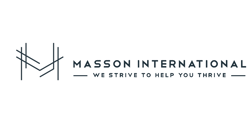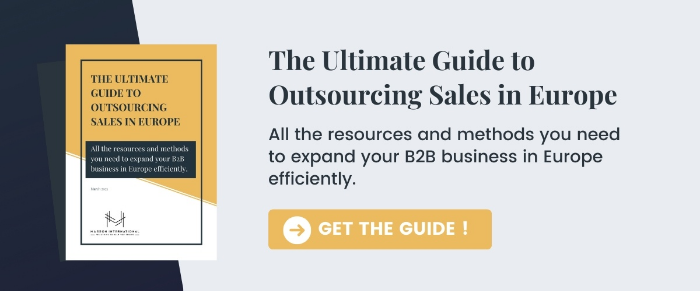Expanding a B2B SaaS business into Europe presents exciting growth opportunities.
However, it also comes with significant challenges. The region has multiple markets, each with its own regulations, languages, and customer expectations.
This makes it difficult for companies to scale efficiently.
Without a strong, localized sales strategy, entering these markets can be slow and costly. However, SaaS companies that outsource sales often see initial results within three to six months, with steady revenue growth expected after six to eight months.
For many businesses, outsourcing sales provides a faster and more cost-effective way to expand without the burden of building an in-house team.
By working with specialized providers, companies can accelerate market entry, reduce costs, and gain access to experienced sales professionals who understand the complexities of selling SaaS in Europe.
This article explores the benefits, costs, and best practices of SaaS sales outsourcing in Europe to help decision-makers implement effective strategies for growth.
What is SaaS sales outsourcing?
SaaS sales outsourcing is the process of delegating part or all of the sales function to an external provider. This allows companies to leverage external expertise. It reduces the need to build and manage an in-house sales team.
An outsourced sales team for SaaS typically handles:
- Lead generation for SaaS startups by identifying and qualifying high-potential prospects.
- Sales development and closing by nurturing leads and converting them into customers.
- Account management and upselling, ensuring customer retention and revenue growth.
Specifications linked solely to the SaaS model
Unlike traditional B2B sales, SaaS sales require a consultative approach. It focuses on customer education, long-term value, and relationship-building. Since SaaS operates on a monthly recurring revenue (MRR) model, success depends not just on closing deals but also on high retention and minimizing churn. SaaS sales cycles are typically shorter.
Because of this, teams must engage, qualify, and convert leads quickly while ensuring prospects see the product’s value.
A structured B2B SaaS sales process helps guide customers from initial interest to long-term adoption, maximizing satisfaction and renewals.
For further reading, here is a Comprehensive Guide to B2B Sales Outsourcing in Europe
Why outsource SaaS sales in Europe?
Expanding into the European SaaS market presents both opportunities and challenges.
To successfully navigate this landscape, companies must overcome several key obstacles. These can hinder growth and sales efficiency.
Overcoming market complexity
Selling SaaS in Europe requires navigating multiple legal and regulatory frameworks, such as GDPR compliance and varying tax policies. Cultural differences also play a role in shaping purchasing behaviors and decision-making processes. An outsourced sales team for SaaS understands these regional variations and can adjust sales strategies accordingly.
Faster time-to-market
Building an in-house European sales team requires months of recruitment, training, and infrastructure development.
By outsourcing, companies can accelerate market entry with experienced sales professionals already familiar with the region.
Cost-effectiveness
Maintaining an internal sales team involves various expenses. These include salaries, recruitment costs, software tools, and office overhead.
Outsourcing eliminates many of these fixed costs, allowing companies to scale sales operations efficiently while reducing financial risk.
Access to specialized sales talent
Experienced SaaS solutions sales outsourcing providers bring knowledge of subscription-based sales models, customer lifecycle management, and upselling techniques.
Their expertise allows SaaS businesses to improve conversion rates and customer retention.
Focus on core business
By outsourcing sales operations, SaaS companies can dedicate more resources to product innovation, marketing, and customer success, while allowing external specialists to generate revenue.
How much does SaaS sales outsourcing cost in Europe?
Understanding the cost of SaaS sales outsourcing in Europe is essential for making an informed decision.
The overall investment depends on the pricing model outsourcing providers use. Each offers different flexibility and costs.
Pricing models
SaaS sales outsourcing providers typically offer different pricing structures, including:
- Retainer-based models that involve a fixed monthly fee for dedicated sales services.
- Commission-based models where payment is based on closed deals, aligning incentives with performance.
- Hybrid models that combine a base retainer with commission incentives to balance costs and results.
Cost comparison
An outsourced sales team eliminates many expenses associated with in-house teams.
These include recruitment, training, CRM implementation, and administrative overhead. Companies only pay for their needed services, making sales outsourcing a flexible and scalable solution.
Learn more about how much outsourced lead generation costs.
Hidden costs to consider
While outsourcing reduces upfront costs, businesses should also account for:
- Onboarding and alignment with internal teams to ensure a seamless transition.
- CRM integration and performance tracking to maintain visibility into sales activities and results.
How to choose the right SaaS sales outsourcing partner?
Selecting the right outsourcing partner is critical to ensuring a smooth and effective sales expansion into Europe.
A strong provider should have experience in SaaS-specific sales, understand regional market complexities, and seamlessly integrate with your internal processes.
Key criteria for selection
When evaluating outsourcing providers, there are various criteria to consider:
- Experience in SaaS sales – Look for case studies and proven success in outsourced sales projects in the SaaS industry. This ensures they understand subscription-based models, lead nurturing, and customer retention strategies.
- Understanding of the European market – A provider with localized teams will more effectively navigate cultural, legal, and regulatory challenges unique to Europe. They should demonstrate knowledge of GDPR compliance and regional business customs.
- Proven methodology – Assess their expertise in inbound and outbound sales, social selling, and techniques specific to B2B SaaS sales outsourcing in Europe to ensure effective market penetration.
- Integration capabilities – The provider should seamlessly connect with your CRM, reporting structures, and analytics tools to maintain visibility into sales performance.

Questions to ask potential providers
Before selecting a partner, it’s important to ask the right questions to ensure they align with your business goals.
Which European markets do you specialize in?
A strong provider should have direct experience in your target regions.
Look for a partner with localized sales teams who understand regional buyer behavior, compliance laws, and language nuances.
How do you qualify and nurture leads to ensure quality conversions?
The provider should have a structured B2B SaaS sales process. This includes leveraging automation, targeted outreach, and lead-scoring models to filter out low-value prospects.
Ask about their approach to lead generation for SaaS startups and how they keep engagement high throughout the sales funnel.
What KPIs do you track, and how do you report performance?
A strong provider should track key performance indicators. These include the number of qualified leads generated monthly, lead-to-customer conversion rate, sales cycle length, customer acquisition cost (CAC), and retention and upsell rates. Regular reports should go beyond raw data. They should offer insights and strategy recommendations to optimize sales performance.
Red flags to avoid
Not all sales outsourcing providers deliver the same level of service.
Here are some warning signs that indicate a potential misalignment.
- Lack of transparency in reporting – A reputable provider should provide detailed, data-driven insights on sales performance. If a company is vague about its metrics or unwilling to share reports, this could indicate poor tracking or accountability issues.
- No proven experience in SaaS sales or subscription-based models – Selling SaaS requires a different approach than traditional B2B sales. A lack of case studies, testimonials, or references from SaaS companies is a red flag. It suggests the provider may not fully understand MRR-based sales models, onboarding best practices, or churn reduction strategies.
Best practices for managing an outsourced SaaS sales team
For an outsourced sales team to succeed, it must integrate smoothly with internal operations.
Onboarding and integration
A successful outsourcing partnership requires seamless collaboration between internal teams and external sales providers.
Focus on:
- Team collaboration – Ensure outsourced sales teams work closely with marketing and product teams to align on messaging, positioning, and customer pain points. Misalignment between these teams can lead to inconsistent messaging and poor conversion rates.
- Technology integration – Set up CRM systems, reporting dashboards, and communication tools from the start. The external team should have real-time access to data on lead status, past customer interactions, and deal progress.
Clear expectations and reporting
- Performance benchmarks – Define clear sales goals, including lead conversion rates, revenue targets, and pipeline growth expectations. A lack of specific KPIs leads to inefficiencies.
- Regular reporting – Implement structured updates, including weekly performance summaries and monthly strategy reviews. This ensures that the outsourced team remains accountable and aligned with company objectives.
Find out more about the global sales strategy for outsourcing in Europe.
Avoiding common mistakes
- Weak onboarding – Outsourced teams will lack the knowledge required to sell your SaaS product effectively without a proper onboarding process. To maximize performance, provide clear training on product features, pricing, and competitive positioning.
- Lack of communication – Insufficient check-ins between internal teams and the outsourced provider can lead to missed opportunities and misaligned sales efforts. Maintain frequent status calls, strategy reviews, and shared collaboration tools to ensure seamless coordination.
- No performance tracking – Without ongoing monitoring, it is difficult to measure the effectiveness of outsourcing. Set up automated tracking for KPIs and analyze conversion rates regularly. Adjust tactics accordingly to maximize return on investment.

Conclusion
SaaS sales outsourcing in Europe offers companies a powerful way to scale their operations efficiently. By leveraging external sales expertise, businesses can accelerate market entry, reduce costs compared to in-house teams, and gain access to experienced professionals who understand the complexities of the SaaS industry.
Keep in mind, success depends on selecting the right outsourcing partner. A provider with a strong track record in SaaS sales, deep knowledge of European markets, and seamless integration with your existing tools and processes will be best positioned to drive results.
Clearly defined KPIs, structured reporting, and transparent communication will ensure alignment between internal teams and outsourced sales representatives.
For SaaS businesses looking to expand into France, Switzerland, or Belgium, Masson International offers tailored business development services designed to help companies establish a strong market presence. If you are ready to accelerate your sales growth in Europe, reach out to our team to discuss how we can support your expansion strategy.
Please review our services and contact us today to get schedule a consultation.





